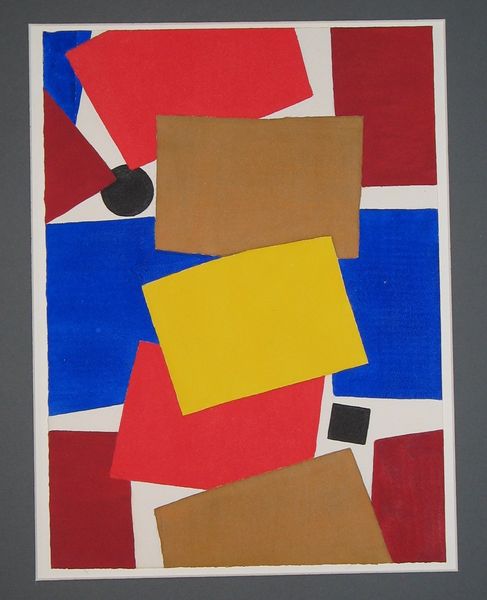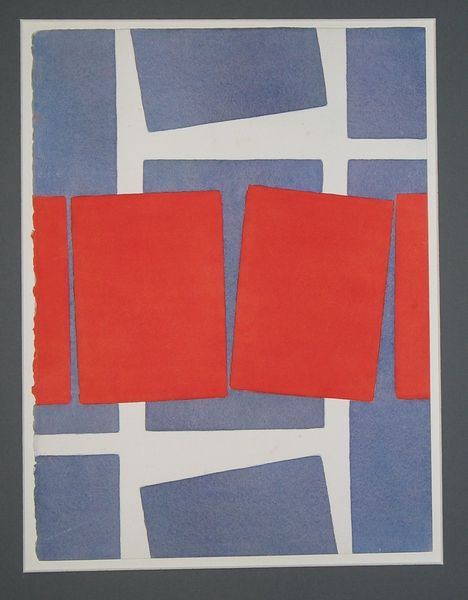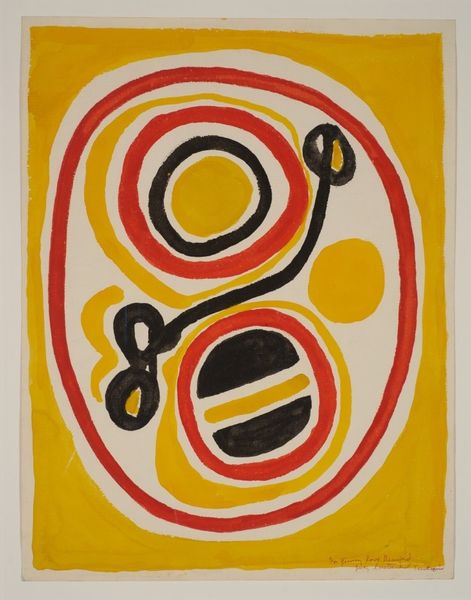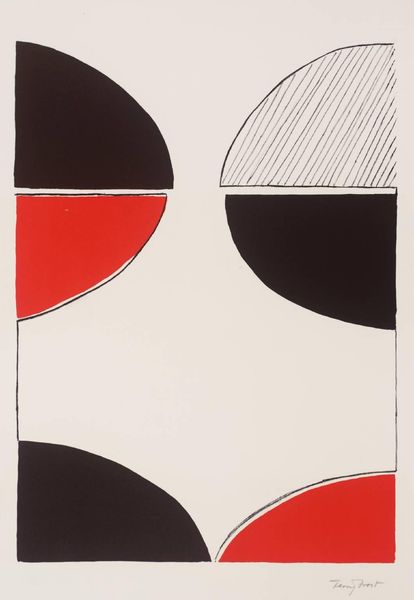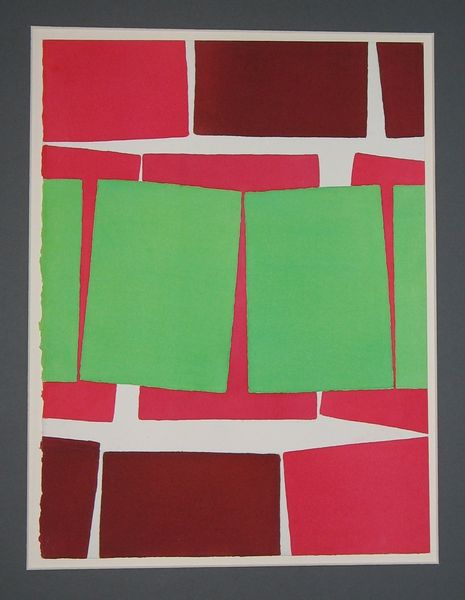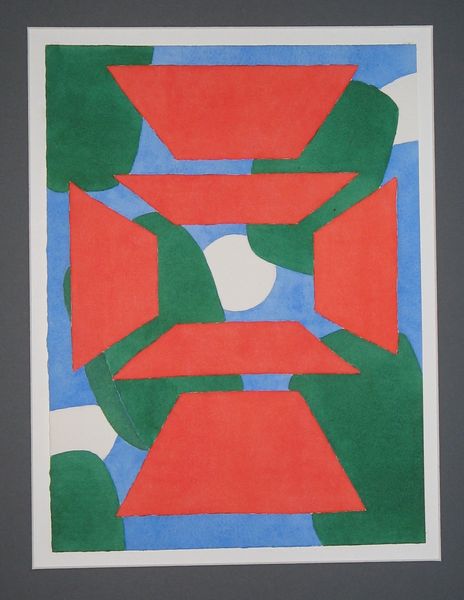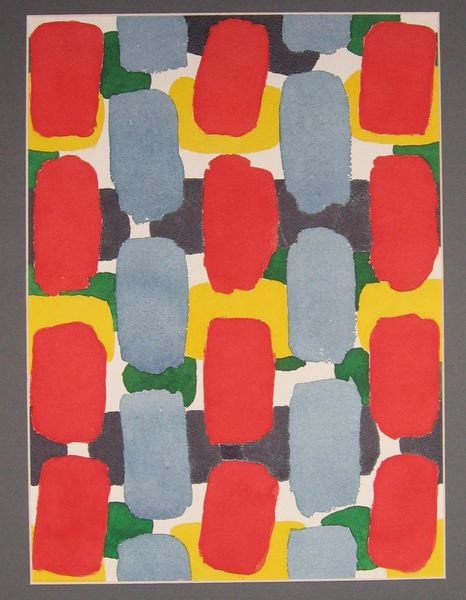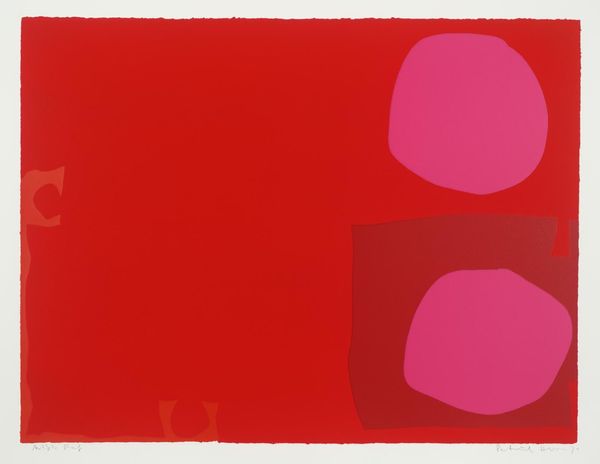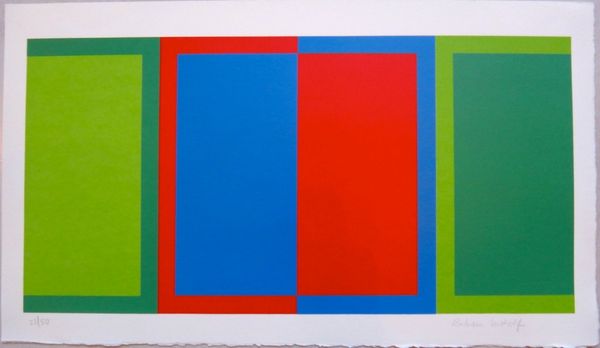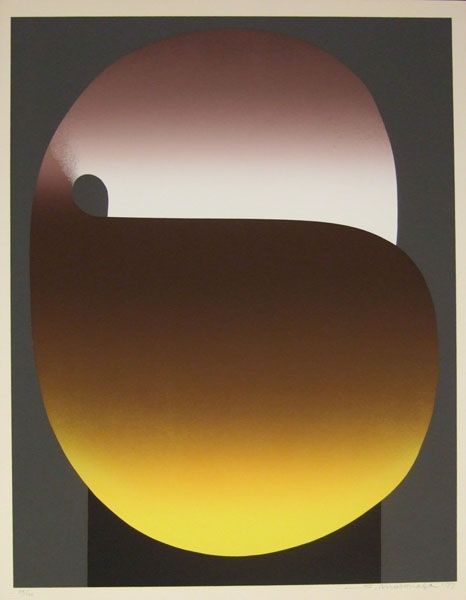
Copyright: Funasaka Yoshisuke,Fair Use
Curator: This work is titled "Three Lemons" created by Funasaka Yoshisuke in 1971, rendered in acrylic. Its simplicity has always intrigued me. Editor: Immediately, I'm drawn to the bold geometric shapes and colors—that salmon-y pink, the stark black rectangle, and the sunny, almost cartoonish, lemons. It’s so graphic and playful. I almost want to bite into it! Curator: Absolutely. It’s interesting to note how Yoshisuke utilizes geometric abstraction. One might consider the composition as a response to pop art's commentary on consumer culture, particularly within the context of post-war Japan. Editor: Consumer culture as depicted by citrus? Perhaps he's saying life gives you lemons and... make really aesthetically pleasing art? There's also something very cool about the negative space, like a spotlight highlighting their form. Curator: Precisely. The contrast serves to question the boundaries between the foreground and background, drawing the viewer's attention not only to the represented objects but also the relationship with their surroundings. How do you see this contrasting to the abstract movements in other areas of the world? Editor: The precision feels so Japanese, even with its clear pop art influences. Unlike Warhol's messy repetitions, these lemons seem placed deliberately, meditating on simple form, and suggesting order. And that order, of course, could suggest a very subversive social critique, wouldn’t you say? Curator: It could also be posited that these are symbols of health, wealth and fortune within certain Asian communities, an affirmation during uncertain social times. This contrasts against the strong use of colour more prevalent in western abstract movements, such as a vivid pop, but with a specific visual language in Japanese pop art style. Editor: Ultimately, "Three Lemons" leaves me with this lovely tension: is it frivolous and fun or subtly subversive and deeply thoughtful? Or maybe...can't it be both? Curator: It's precisely this multifaceted nature that keeps drawing me back to it. It exemplifies the socio-political concerns through a playful aesthetic, inviting continuous contemplation. Thank you for offering a brilliant insight into this dialogue between our perspectives.
Comments
No comments
Be the first to comment and join the conversation on the ultimate creative platform.

